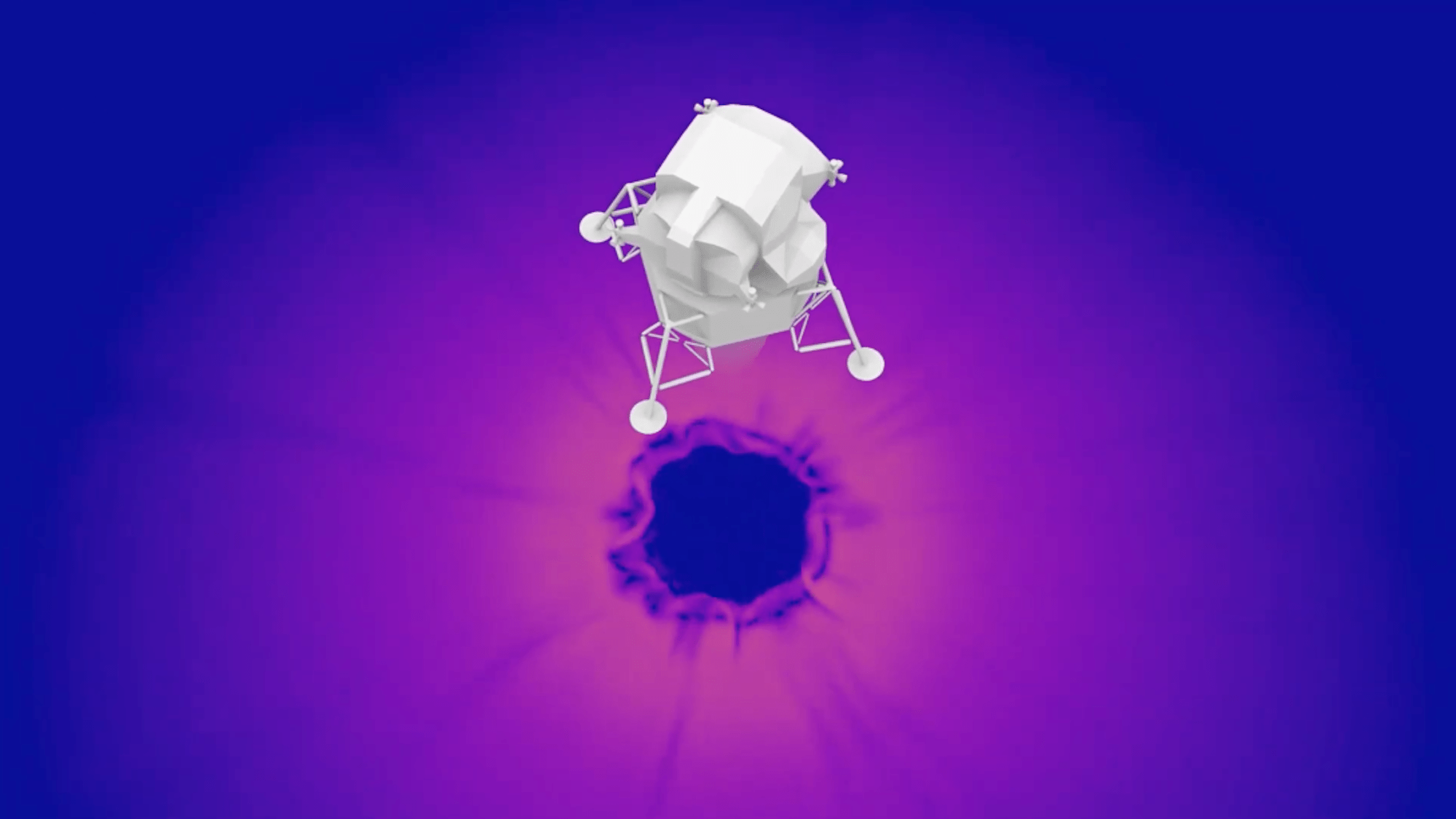

Hindsight is not quite 20/20 for NASA’s historic Apollo missions. For instance, the Apollo 12 lander successfully touched down on the moon at exactly 6:35:25 UTC on November 19, 1969. What happened to the lunar environment as astronauts touched down, however, wasn’t recorded—and exact details on the reactions between nearby rocks, debris, and lunar regolith to lander engines’ supersonic bursts of gas aren’t documented. And physically replicating Apollo 12’s historic moment on Earth isn’t possible, given stark differences in lunar gravity and geology, not to mention the moon’s complete lack of atmosphere.

This is particularly a problem for NASA as it continues to plan for astronauts’ potential 2025 return to Earth’s satellite during the Artemis program. The landing craft delivering humans onto the lunar surface will be much more powerful than its Apollo predecessors, so planning for the literal and figurative impact is an absolute necessity. To do so, NASA researchers at the Marshall Space Flight Center in Huntsville, Alabama, are relying on the agency’s Pleiades supercomputer to help simulate previous lunar landings—specifically, the unaccounted information from Apollo 12.
As detailed by NASA earlier this week, a team of computer engineers and fluid dynamics experts recently designed a program capable of accurately recreating Apollo 12’s plume-surface interactions (PSI), the interplay between landing jets and lunar topography. According to the agency, the Pleiades supercomputer generated terabytes of data over the course of several weeks’ worth of simulations that will help predict PSI scenarios for NASA’s Human Landing System, Commercial Lunar Payload Services, and even future potential Mars landers.
[Related: Meet the first 4 astronauts of the ‘Artemis Generation’]
NASA recently showed off one of these simulations—the Apollo 12 landing—during its appearance at SC23, an annual international supercomputing conference in Denver, Colorado. For the roughly half-minute simulation clip, the team relied on a simulation tool called the Gas Granular Flow Solver (GGFS). The program is both capable of modeling interactions to predict regolith cratering, as well as dust clouds kicked up around the lander’s immediate surroundings.
According to the project’s conference description, GGFS utilizing its highest fidelities can “model microscopic regolith particle interactions with a particle size/shape distribution that statistically replicates actual regolith.” To run most effectively on “today’s computing resources,” however, the simulation considers just one-to-three potential particle sizes and shapes.
[Related: Moon-bound Artemis III spacesuits have some functional luxury sewn in.]
The approximation of the final half-minute of descent before engine cut-off notably includes depictions of shear stress, or the lateral forces affecting a surface area’s erosion levels. In the clip, low shear stress is represented by a dark purple hue, while the higher shear stress areas are shown in yellow.
Going forward, the team intends to optimize the tool’s source code, alongside integrating increased computational resources. Such upgrades will allow for better, higher fidelity simulations to fine-tune Artemis landing procedures, as well as potentially plan for landing missions far beyond the lunar surface.
